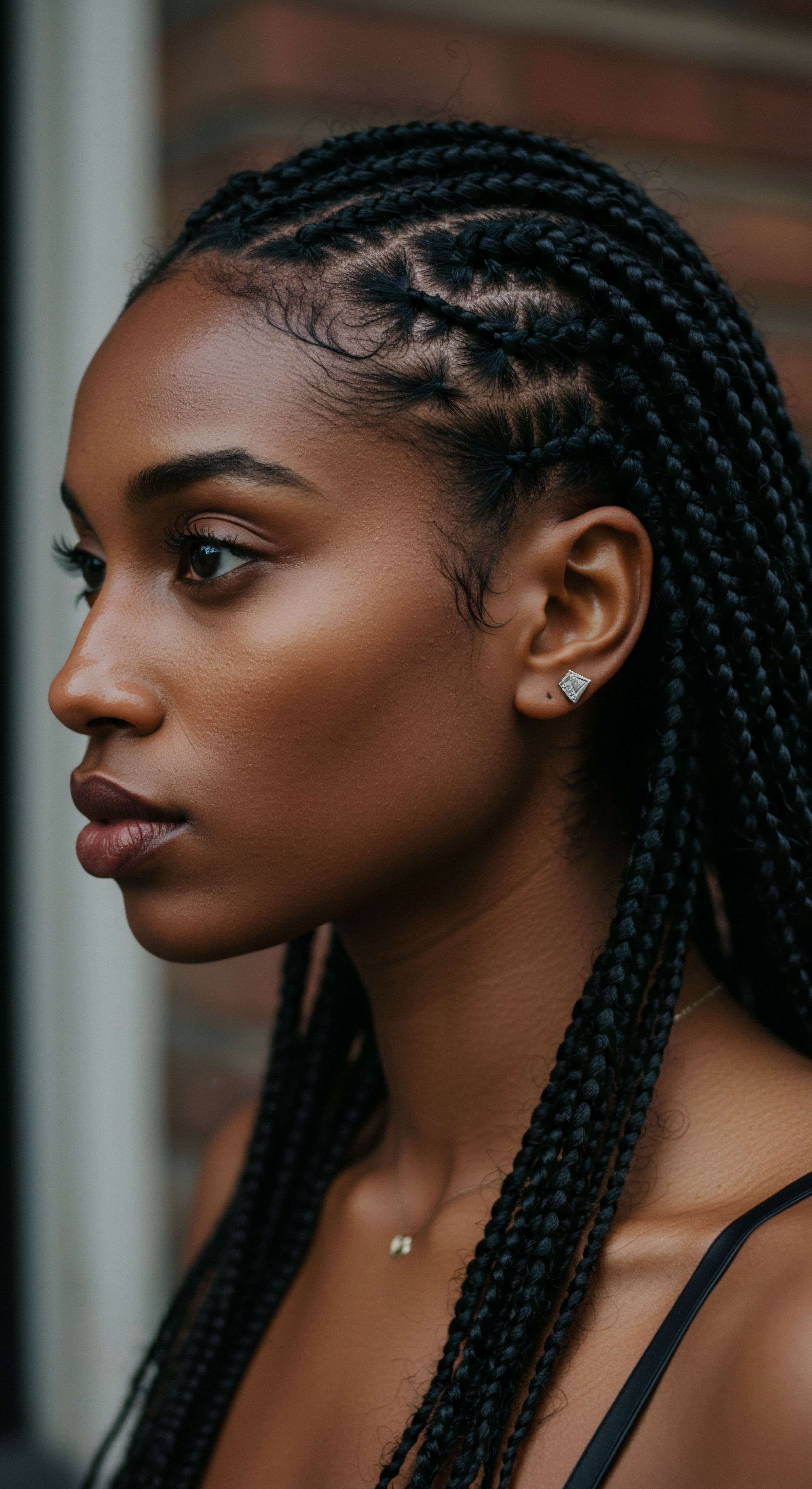
Roots
The quiet rustle of leaves, the gentle flow of a stream, the steadfast strength of an ancient tree – these whispers of the natural world hold profound lessons, often overlooked in our swift modern lives. Among them resides an enduring wisdom about our own selves, particularly our hair. For those with textured strands, this connection runs especially deep, linking us to a heritage rich with practices that honored hair not merely as an adornment, but as a living part of our being, a repository of identity and history. Could these echoes from antiquity, these practices steeped in observation and reverence, offer a path toward a beauty routine that is not only effective but also genuinely sustainable?
Before we consider how ancient traditions might guide our present choices, it serves us well to truly know the very fabric of textured hair. Its inherent design, its unique responses to moisture and environment, shapes every aspect of its care. Understanding this foundational biology allows us to appreciate the intuitive wisdom of past generations, whose methods arose from an intimate acquaintance with their hair’s distinct needs.
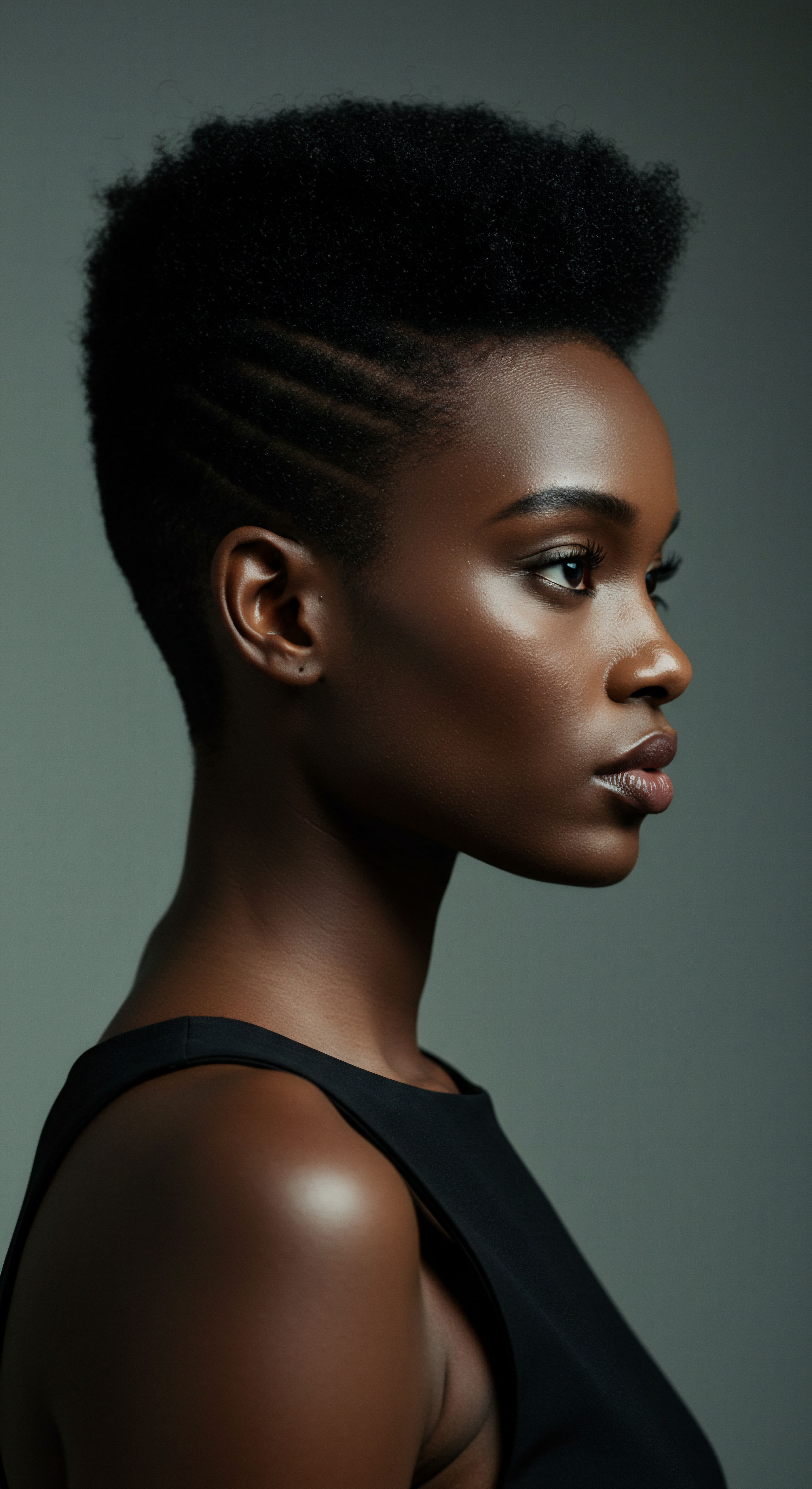
Hair’s Inner Architecture for Textured Strands
At its most fundamental, each strand of hair, regardless of its curl pattern, shares a basic architecture ❉ the cuticle, cortex, and medulla. However, the precise arrangement and characteristics of these layers within textured hair bestow upon it distinct properties. The Cuticle, the outermost protective layer, consists of overlapping scales. In highly coily or kinky hair, these scales may lift more readily, leading to increased porosity and a tendency for moisture to escape.
The Cortex, nestled beneath the cuticle, holds the hair’s strength, elasticity, and pigment. The very shape of the hair follicle determines the curl pattern; an elliptical or flat follicle produces the tight coils and kinks that characterize many textured hair types. This structural reality explains why these hair types often feel drier and appear less shiny, as the light does not reflect uniformly across their intricate curves.
The intricate spiral of a coil means fewer points of contact between individual strands, making it harder for natural scalp oils to travel down the entire length of the hair. This inherent characteristic contributes to the common experience of dryness, which in turn demands a different approach to hydration and sealing.

Mapping Hair’s Varied Expressions
Modern classification systems, while attempting to categorize the vast spectrum of textured hair, sometimes simplify a deeply diverse reality. These systems often employ numerical and alphabetical codes, like Type 4C or Type 3A, to describe curl patterns ranging from loose waves to tight coils. While such frameworks offer a starting point for discussion, they do not fully capture the nuanced differences in strand density, porosity, and elasticity that exist even within a single curl type. Ancient societies, perhaps without formal charts, understood this individuality through observation and inherited knowledge, adapting their practices to the specific hair types within their communities.
Understanding the inherent architecture of textured hair reveals why ancient practices, rooted in observation, offer a path to genuine sustainability.
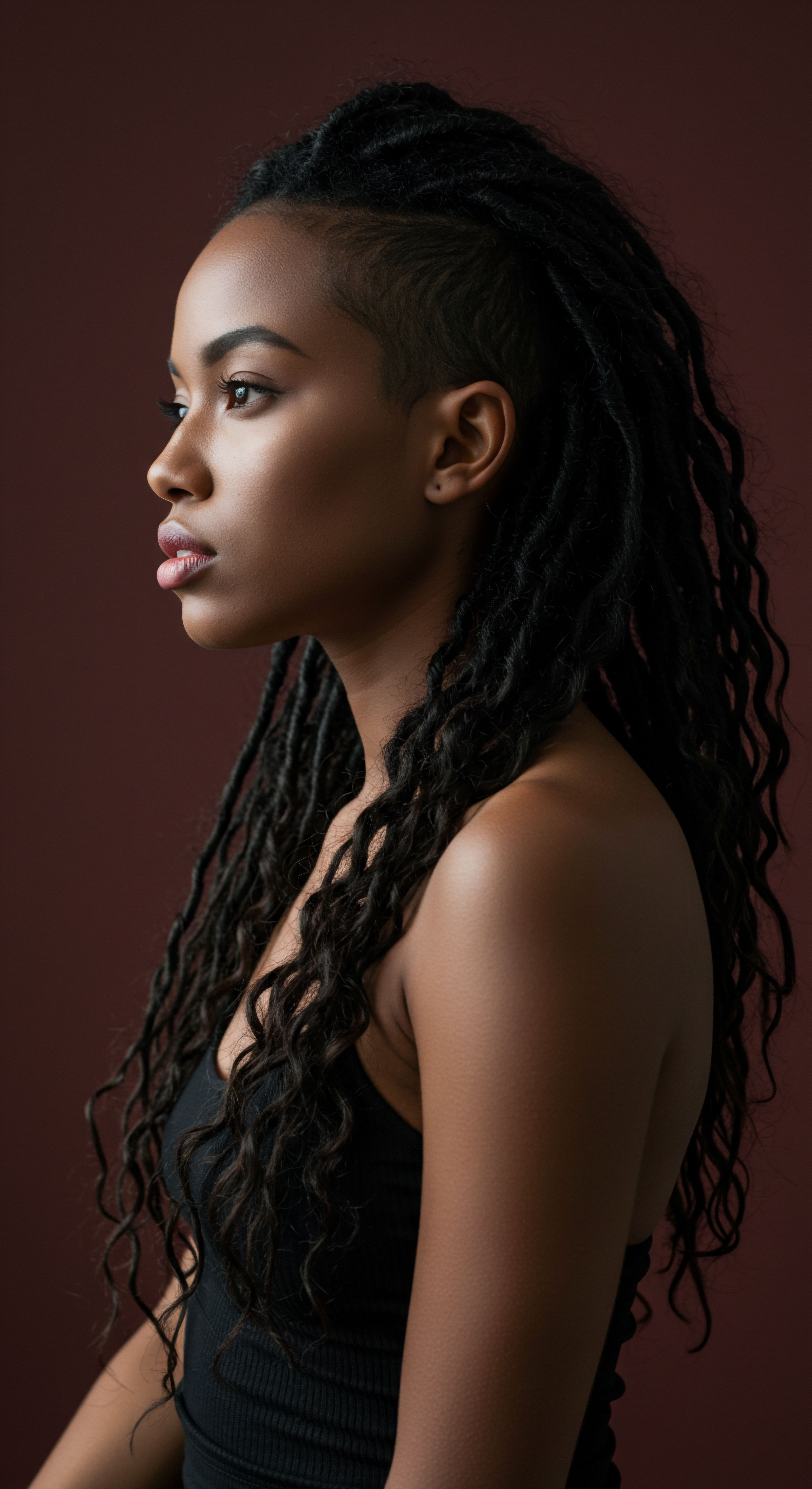
A Shared Language for Hair Well-Being
To discuss textured hair with clarity, a precise vocabulary proves invaluable. Terms like Co-Washing, referring to cleansing with conditioner, or Pre-Poo, a pre-shampoo treatment, address the need for gentle care that preserves moisture. The concept of Sealing, locking in hydration with an oil or butter, directly counters the natural moisture loss common in textured hair. These modern terms, though new in phrasing, echo ancient principles of protecting and nourishing the hair with natural emollients and mindful application.
The rhythm of hair’s life, its growth, rest, and shedding, also holds relevance. The Anagen Phase, or growth stage, can last for years, while the Catagen (transitional) and Telogen (resting) phases are much shorter. Factors such as diet, stress, and overall health profoundly influence these cycles. Ancient cultures intuitively understood the interconnectedness of internal well-being and external vitality, often incorporating nourishing foods and calming rituals into their routines to support hair health.
A foundational understanding of hair’s biological reality allows for an appreciation of why certain practices yield beneficial results.
- Cuticle ❉ The outermost protective layer, often more lifted in textured hair, impacting moisture retention.
- Cortex ❉ The inner core providing hair’s strength and elasticity, shaped by the follicle.
- Moisture Balance ❉ A crucial concept for textured hair, as its structure can lead to natural dryness.
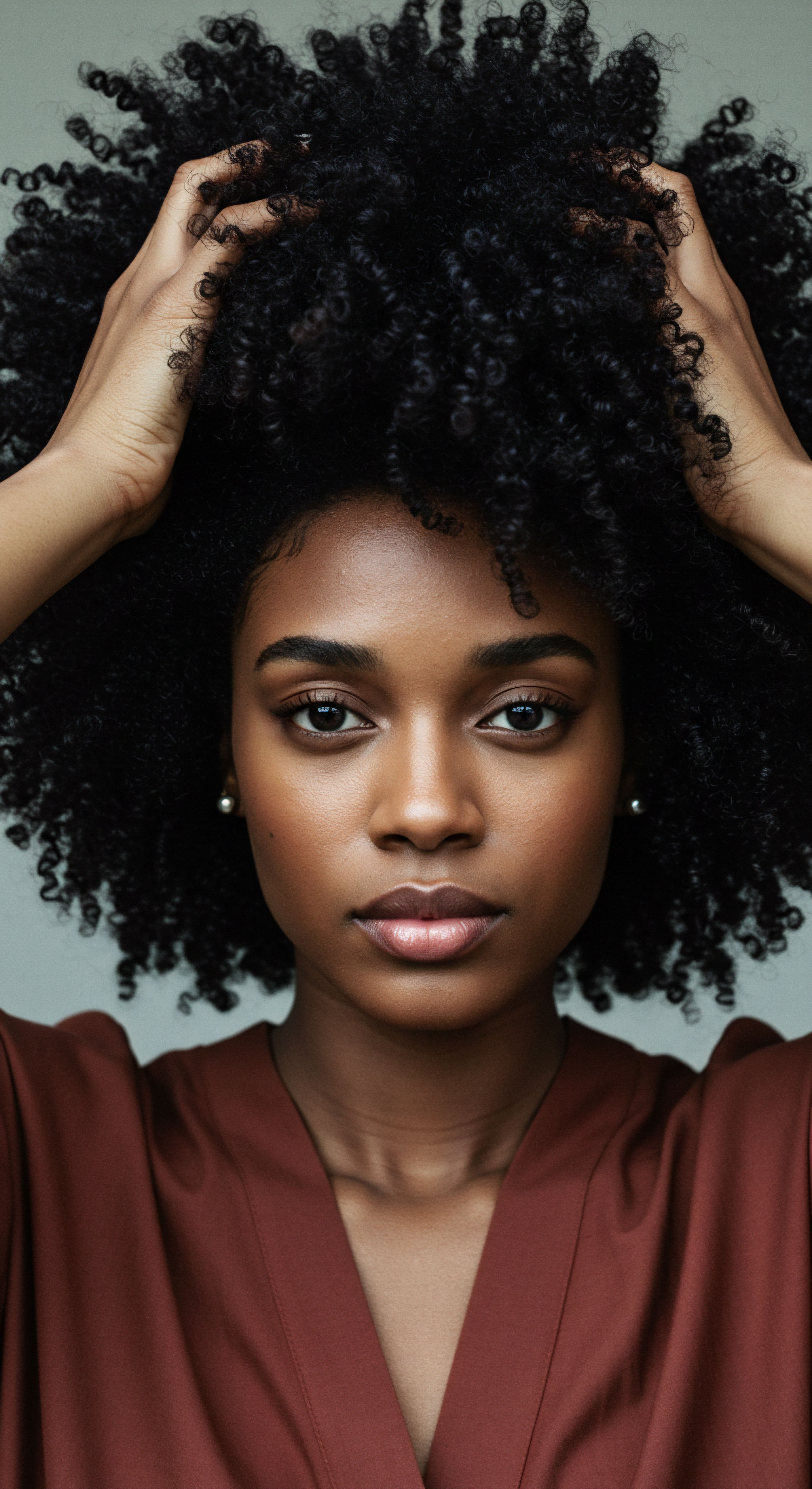
Ritual
Our daily interactions with our hair, the methods we employ, and the tools we reach for, shape its health and appearance. This sphere of practical application, the “ritual” of hair care, invites us to consider how ancient practices, often steeped in intention and simplicity, might inform our modern routines. Rather than seeking quick fixes, we might instead find profound benefit in the deliberate, nurturing approaches that characterized hair care for generations past.
Ancient hair care was a dance with nature, a respectful engagement with what the earth provided. This was a realm where techniques were honed over centuries, passed down through families, reflecting a deep understanding of hair’s needs and the environment’s offerings.
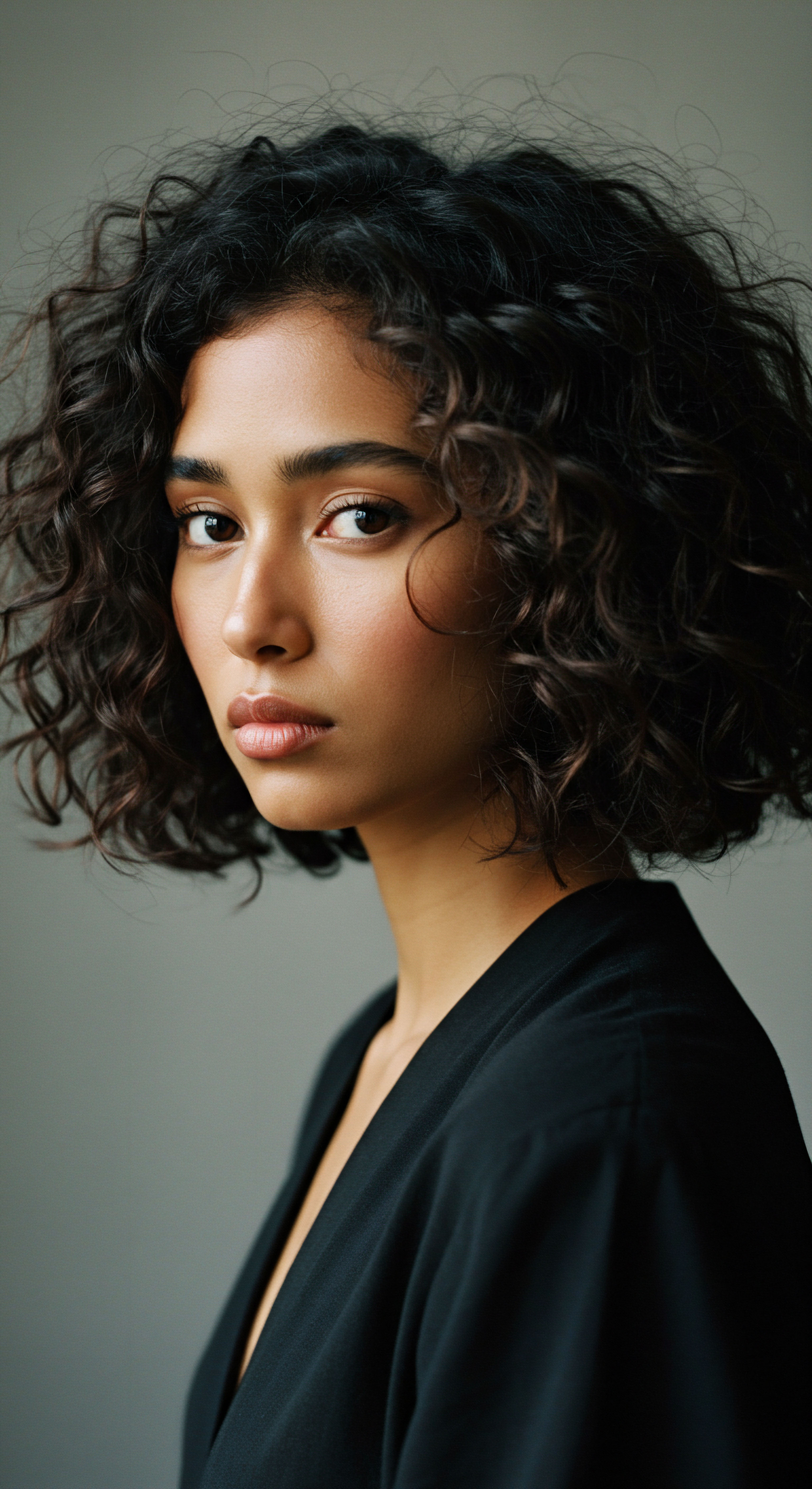
Protective Styling Through the Ages
Long before “protective styling” became a contemporary term, ancient cultures practiced forms of braiding, twisting, and wrapping hair to safeguard it from environmental elements and mechanical stress. From the elaborate cornrows of ancient Africa to the intricate plaits of various indigenous peoples, these styles served a dual purpose ❉ aesthetic expression and hair preservation. They minimized manipulation, reduced breakage, and helped retain moisture, allowing hair to grow undisturbed. These styles, requiring minimal product and heat, naturally align with principles of sustainability by reducing consumption and energy use.
Consider the durability and longevity inherent in these styles. A well-executed set of braids could last for weeks, eliminating the need for daily washing, conditioning, and styling. This directly translates to reduced water usage, less product consumption, and decreased energy expenditure associated with heated tools.

Natural Styling and Definition
How did our ancestors achieve definition and shape without a cabinet full of gels and creams? They relied on methods that worked with the hair’s natural inclinations, often using water, natural oils, and the hands as primary tools. Techniques like finger coiling, which enhances the natural curl pattern by gently shaping wet strands, or Bantu knots, creating defined curls or waves through wrapping sections of hair, are testament to this ingenuity.
These approaches emphasize working with the hair’s intrinsic texture, rather than attempting to force it into an unnatural state. Such practices inherently reduce reliance on synthetic styling agents and energy-intensive tools.

Hair Adornment and Ancient Sustainability
The history of hair adornment is vast, encompassing everything from intricate wigs worn by Egyptian royalty to the use of natural fibers and extensions in various African societies. While modern wigs and hair extensions often raise concerns about ethical sourcing and environmental impact, ancient forms frequently utilized natural, biodegradable materials. For instance, early extensions might have been crafted from plant fibers or animal hair, integrated with skill and artistry. This stands in stark contrast to the modern synthetic hair extension market.
The production of synthetic hair extensions, largely composed of plastics like polyester, acrylic, and polyvinyl chloride (PVC), is a significant contributor to environmental degradation. These materials are derived from non-renewable resources, and their manufacturing processes are energy-intensive, releasing substantial carbon emissions. Moreover, once discarded, synthetic hair is not biodegradable, meaning it persists in landfills for centuries. A concerning reality is that the beauty industry generates around 8 Million Metric Tons of Plastic Waste Annually, with a staggering 95% of Cosmetic Packaging, Including Synthetic Hair, Thrown Away after a Single Use.
Only a fraction, approximately 9%, of this waste is actually recycled, with the vast majority heading directly to landfills, where plastic bottles alone can take up to 450 years to decompose. This data underscores a profound environmental disparity between the ancient reliance on natural, often locally sourced materials and the modern industry’s reliance on non-biodegradable synthetics.
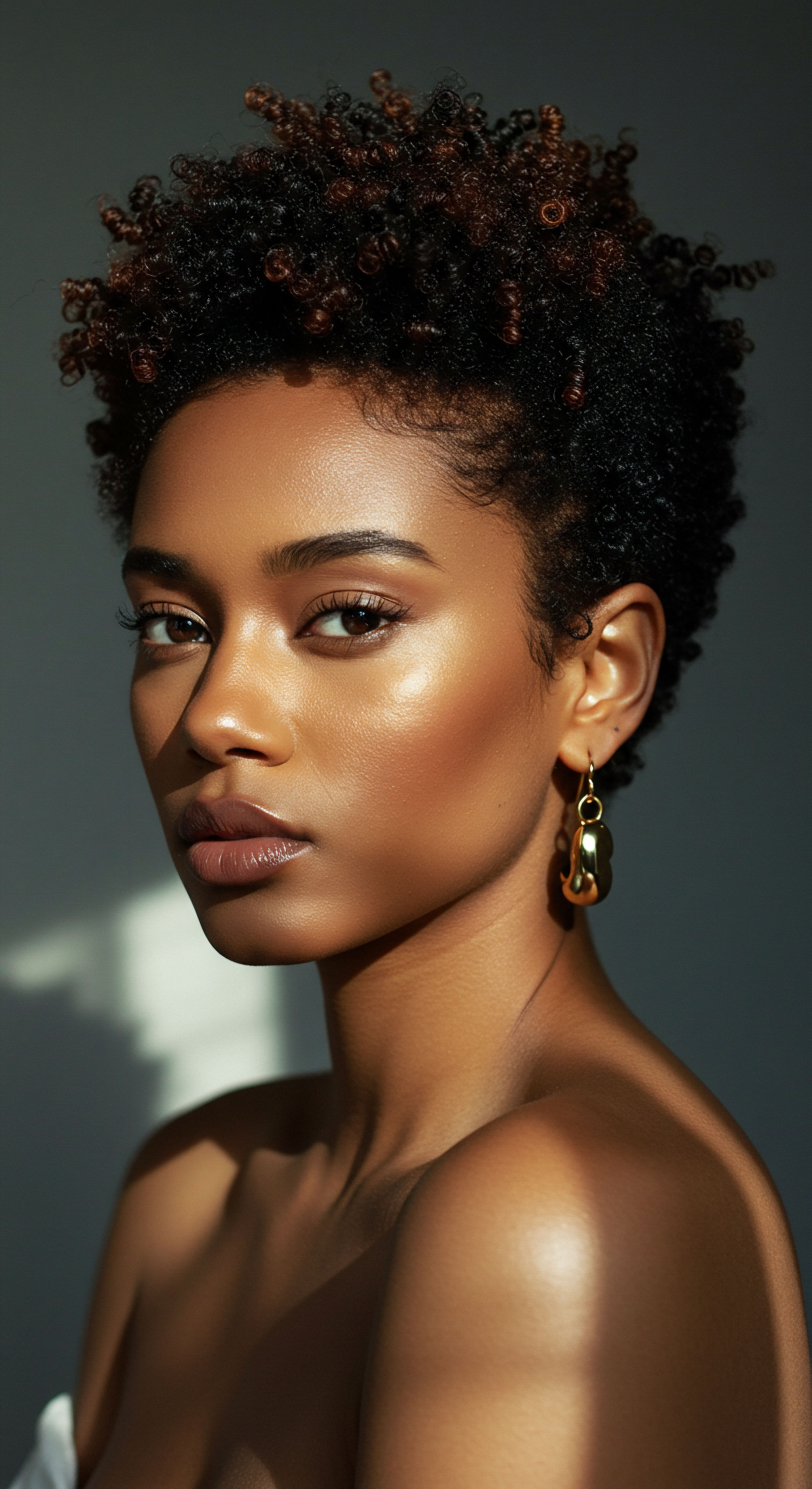
Is Heat Styling Truly Necessary for Healthy Hair?
The concept of applying intense heat to hair for styling is a relatively modern phenomenon, enabled by technological advancements. Ancient methods of straightening or smoothing hair, if desired, involved tension, wrapping, and natural emollients over time, rather than direct thermal exposure. Think of hair wrapping techniques used across cultures to stretch and smooth hair without heat. This historical absence of widespread direct heat application suggests a different relationship with hair texture, one that prioritized its integrity over temporary alterations achieved through high temperatures.
Ancient styling rituals, from protective braiding to natural definition, offer a blueprint for reduced consumption and mindful hair care.

The Hair Toolkit of Generations Past
The tools of ancient hair care were often simple, durable, and derived from nature. Wooden combs, bone pins, and natural fiber brushes contrast sharply with today’s array of plastic brushes, electric styling tools, and single-use accessories. The oils and herbs used were often locally sourced, minimizing transportation and chemical processing. This simplicity in tools and ingredients not only speaks to a less complicated routine but also to a significantly smaller environmental footprint.
| Tool Category Combs & Detanglers |
| Ancient Examples Wooden combs, bone combs, fingers |
| Modern Counterparts (Common) Plastic combs, wide-tooth plastic combs |
| Sustainability Implication Ancient ❉ Biodegradable, durable. Modern ❉ Plastic waste, microplastics. |
| Tool Category Styling Aids |
| Ancient Examples Natural oils (e.g. olive, castor), plant extracts, clays |
| Modern Counterparts (Common) Gels, mousses, creams (often synthetic ingredients, plastic packaging) |
| Sustainability Implication Ancient ❉ Natural, often edible, zero-waste. Modern ❉ Chemical burden, packaging waste. |
| Tool Category Heat Application |
| Ancient Examples Hair wrapping, tension methods, air drying |
| Modern Counterparts (Common) Flat irons, curling irons, blow dryers |
| Sustainability Implication Ancient ❉ Zero energy, no heat damage. Modern ❉ High energy consumption, potential heat damage. |
| Tool Category Accessories |
| Ancient Examples Natural fibers, beads, shells, leather |
| Modern Counterparts (Common) Plastic clips, synthetic scrunchies, disposable ties |
| Sustainability Implication Ancient ❉ Natural, reusable, often handcrafted. Modern ❉ Non-biodegradable, mass-produced. |
| Tool Category This table highlights the shift from natural, low-impact tools to a reliance on synthetic, energy-intensive modern alternatives. |
- Braids ❉ A timeless protective style minimizing manipulation and retaining moisture.
- Bantu Knots ❉ A technique for achieving defined curls without the need for heat.
- Natural Oils ❉ Fundamental ancient emollients for hydration and sealing.

Relay
Beyond the surface of historical techniques and the practical application of care, a deeper inquiry beckons ❉ how do these ancient echoes truly intertwine with the contemporary pursuit of sustainability? This is where the wisdom of the past does not merely offer alternatives, but rather a profound framework for rethinking our relationship with beauty, consumption, and the planet itself. It calls for a sophisticated understanding of interconnectedness, drawing threads from biology, culture, and economic realities.
The modern beauty landscape, while offering a vast array of products, carries an undeniable environmental burden. In contrast, ancient hair practices, by their very nature, were deeply sustainable, driven by necessity and an intimate relationship with the natural world.

What Environmental Footprint Did Ancient Hair Care Leave?
The environmental footprint of ancient hair care was remarkably light. Ingredients were sourced locally, often cultivated or gathered with respect for ecological balance. Think of the use of Ayurvedic Herbs like Amla or Brahmi, grown in harmony with the land, or African black soap made from plantain peels and shea butter. These practices inherently minimized long-distance transportation, chemical processing, and packaging waste.
Products were often made fresh, in small batches, or in solid forms that required no plastic containers. The concept of “zero waste” was not a goal but an inherent reality of daily life.
In stark contrast, the contemporary beauty industry’s reliance on extensive supply chains, synthetic ingredients, and single-use packaging contributes significantly to global pollution. Consider the vast quantities of water consumed in manufacturing, or the petrochemicals involved in creating many modern hair products. A report from the British Beauty Council indicates that 95% of Cosmetic Packaging is Discarded after a Single Use, and only about 9% of It is Actually Recycled, with the rest contributing to landfills for centuries. This figure stands in stark contrast to the negligible waste generated by historical practices that relied on naturally derived, biodegradable materials and reusable containers.
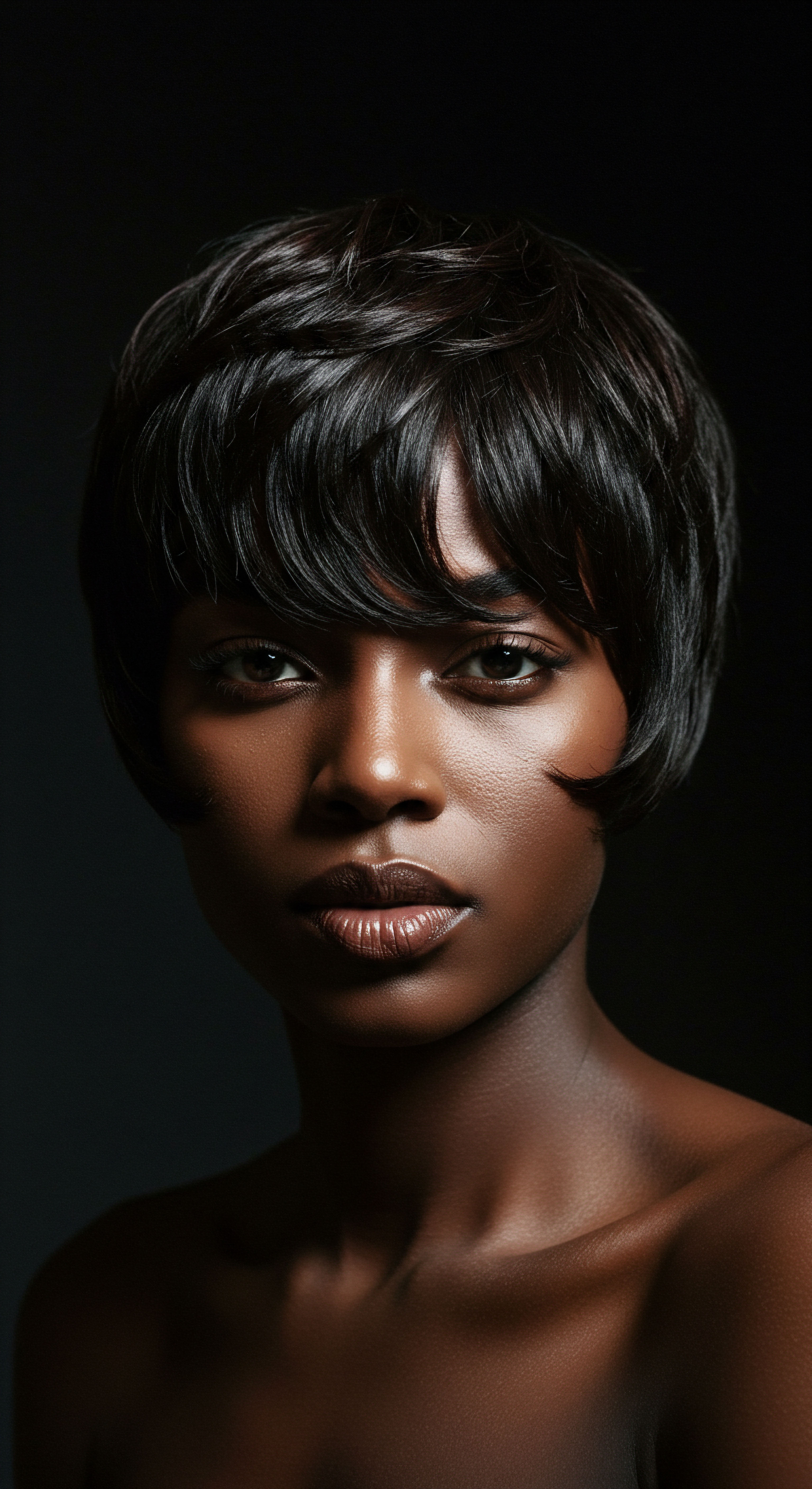
How Did Cultural Meaning Shape Hair Practices?
For many ancient cultures, hair was far more than an aesthetic feature; it was a potent symbol of identity, status, spirituality, and tribal affiliation. Hair rituals were often communal, passed down through generations, strengthening social bonds and cultural continuity. The act of caring for hair was itself a form of meditation, a moment of connection to ancestry and self.
This deep cultural significance fostered a respectful approach to hair, valuing its health and integrity over fleeting trends. The inherent respect for hair translated into practices that preserved its natural state, reducing the need for aggressive treatments or products.
This cultural lens highlights a critical difference ❉ ancient practices were often rooted in collective well-being and reverence for natural cycles, while modern beauty trends can sometimes drive individualistic consumption, disconnected from broader environmental or social consequences.
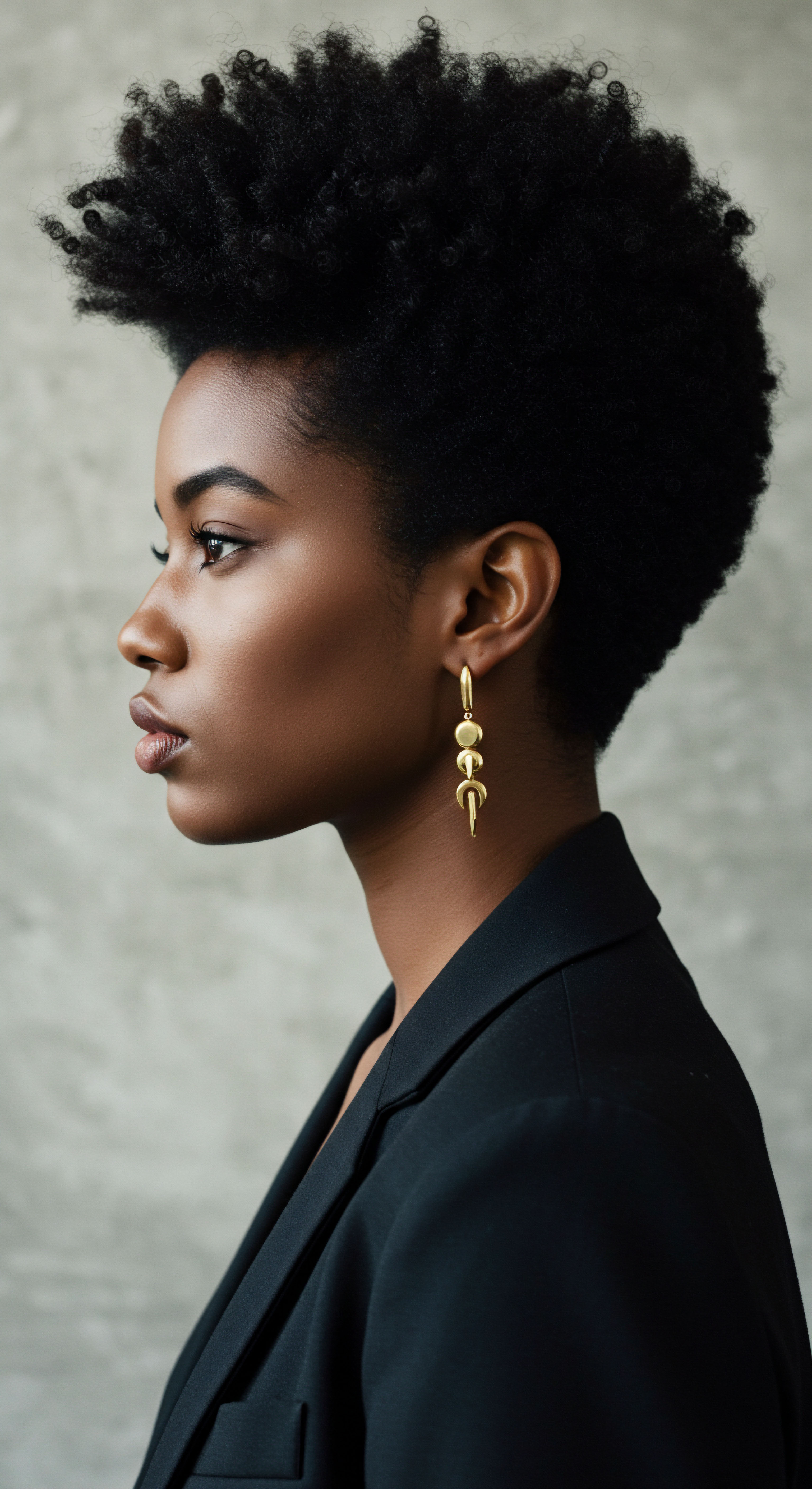
Can Ancient Wisdom Inform Modern Product Development?
The burgeoning interest in “clean beauty” and “sustainable beauty” within the modern industry offers a bridge to ancient wisdom. Many brands are now exploring botanical ingredients long used in traditional remedies, recognizing their efficacy and gentler environmental footprint. The movement towards waterless products, such as shampoo bars or powdered cleansers, directly mirrors the compact, water-free forms common in antiquity. For instance, liquid shampoos can be up to 90% water, and the consumer use phase (e.g.
hot water for rinsing) accounts for a significant portion of a product’s environmental emissions, sometimes as high as 90% for shampoos. Ancient solid formulations inherently sidestepped this substantial water footprint, both in product composition and consumer usage.
The challenge lies in scaling these solutions while retaining the purity and low-impact nature of their ancient counterparts. Authentic sustainability requires a deep dive into supply chains, ensuring ethical sourcing and fair trade, mirroring the community-centric approach often found in traditional systems.
| Aspect Raw Material Sourcing |
| Ancient Hair Practices Local, wild-harvested or cultivated; minimal processing. |
| Modern Hair Care Industry Global supply chains; synthetic compounds, often energy-intensive. |
| Comparative Sustainability Ancient ❉ Low carbon footprint, supports local ecosystems. Modern ❉ High carbon footprint, resource depletion. |
| Aspect Packaging |
| Ancient Hair Practices Reusable containers (gourds, clay pots), leaves, or no packaging. |
| Modern Hair Care Industry Predominantly single-use plastics; complex, multi-material packaging. |
| Comparative Sustainability Ancient ❉ Near zero waste. Modern ❉ Significant plastic pollution (8 million metric tons annually). |
| Aspect Water Consumption |
| Ancient Hair Practices Minimal water in product formulations; efficient rinsing. |
| Modern Hair Care Industry High water content in products (up to 95%); substantial water for rinsing. |
| Comparative Sustainability Ancient ❉ Conserves water resources. Modern ❉ High water footprint throughout lifecycle. |
| Aspect Waste & Disposal |
| Ancient Hair Practices Biodegradable materials; compostable, return to earth. |
| Modern Hair Care Industry Non-biodegradable plastics; microplastic shedding; long decomposition times. |
| Comparative Sustainability Ancient ❉ Closed-loop system. Modern ❉ Persistent environmental pollutants. |
| Aspect This table starkly contrasts the resource-light approach of ancient hair care with the resource-heavy demands of contemporary beauty. |

What Role Do Holistic Influences Play in Hair Health?
Ancient cultures viewed health holistically, recognizing the profound interplay between mind, body, and spirit. Hair health was seen as a reflection of internal balance. Diet, stress levels, sleep, and even emotional states were considered integral to the vitality of one’s hair. This perspective encourages a deeper understanding of well-being that transcends topical application.
For example, traditional Chinese medicine and Ayurvedic practices often link hair loss or changes in texture to internal imbalances, addressing these through dietary adjustments, herbal remedies, and stress reduction techniques. This contrasts with a modern tendency to isolate hair concerns, seeking external solutions without addressing underlying systemic factors.
Ancient hair practices were inherently sustainable, leaving a remarkably light environmental footprint, a stark contrast to modern industry’s burden.
The relay of knowledge across generations, the deep-seated understanding of botanical properties, and the inherent respect for natural resources offer a potent blueprint for a more sustainable beauty future. It is a call to look beyond superficial trends and instead to the enduring wisdom that sustained healthy, vibrant hair for millennia.
- Local Sourcing ❉ A principle of ancient practices that minimized transportation and environmental impact.
- Waterless Formulations ❉ An ancient norm now inspiring modern sustainable product innovation.
- Holistic Health ❉ The ancient understanding of hair health as a mirror of overall well-being.

Reflection
The journey through ancient hair practices reveals more than just forgotten recipes or antiquated tools; it unveils a philosophy, a quiet reverence for the natural world and our place within it. Could the path to a truly sustainable beauty routine lie not in complex innovations alone, but in a thoughtful return to simplicity, to the intuitive wisdom that guided generations before us? Perhaps our hair, with its unique story and texture, yearns for this reconnection, a gentle touch that honors its heritage and respects the earth that nourishes us all.

References
- Gatt, I. J. & Refalo, P. (2021). Life cycle assessment of recyclable, reusable and dematerialised plastic cosmetic packages. IOP Conference Series ❉ Materials Science and Engineering, 1196(1), 012022.
- Nydrioti, I. Moutsaki, M. M. Leounakis, N. & Grigoropoulou, H. (2023). Implementation of the Water Footprint as a water performance indicator in industrial manufacturing units located in Greece ❉ Challenges & Prospects. ResearchGate.
- Vassallo, N. M. (2023). Life cycle assessment of cosmetic packaging scenarios (Bachelor’s dissertation). University of Malta.
- Alonso, M. & Valenzuela, P. (2023). Life Cycle Assessment (LCA) of the Impact on the Environment of a Cosmetic Cream with Gold Nanoparticles and Hydroxylated Fullerene Ingredients. MDPI.
- Nanda, V. & Singh, R. (2018). Ayurvedic Approach to Hair Care. In Hair Care ❉ A Comprehensive Guide. CRC Press.
- Koff, S. (2013). The History of Hair ❉ Fashion and Adornment in Ancient Civilizations. The Metropolitan Museum of Art.
- Chakraborty, A. (2017). Ethnobotany of Traditional Hair Care Practices in India. Journal of Ethnopharmacology.
- Goody, J. (1990). The Cultural History of Hair. Cambridge University Press.
- Anadolu, R. (2019). The Role of Hair in Identity and Culture. In The Psychology of Hair. Springer.
- Rastogi, S. & Pandey, M. M. (2010). Traditional Indian Hair Care Products. In Herbal Cosmetics Handbook. National Institute of Science Communication and Information Resources.